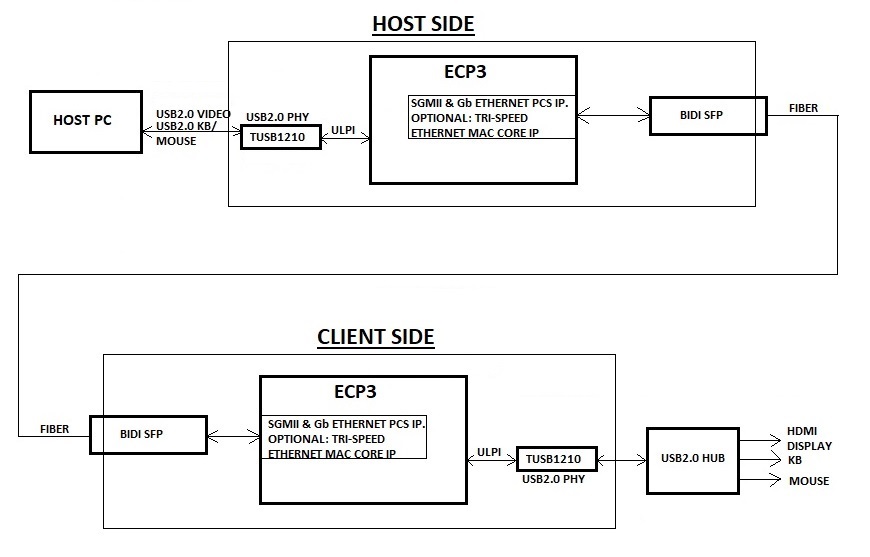For my design, implementing both Case 1 and Case 3. For Case 1, using a TUSB1210 PHY to interface between a PC Host and a FPGA via the PHY ULPI pins, and for Case 3 I use another TUSB1210 PHY to interface between an FPGA and an external USB Hub.
This is my understanding of the TUSB1210EVM:
Power Input:
+5V to CN1.2 and CN1.4
+1.8V to CN1.19 and CN1.20
All cases assume High Speed mode.
Case 1: If I want my TUSB1210 to interface to a PC USB port (the USB Host), my TUSB1210 has to be setup as a Device, data sheet page 53.
Case 2: If I want my TUSB1210 to interface to a USB Device (a peripheral such as a mouse or keyboard), my TUSB1210 has to be setup as a Host, data sheet page 48.
Case 3: What if I want to interface to a USB Hub, does the Hub act as a USB "Host", therefore, the TUSB1210 has to be setup as a Device????
For Case 1, if my assumptions above are correct,
J3 jumper I see as not being used, therefore, not populated.
J5 jumper set for 1-3 and 2-4. I do not see what J5: 1-3 does, I think it is not required.
J6 jumper set for 1-2, Output Mode for clock, use onboard 26MHz oscillator for REFCLK input.
J7 jumper is unpopulated.
J8 jumper is unpopulated, not sure what purpose this serves.
J9 jumper set for 2-3, so chip is enabled by +1.8V. I could set for 1-2 so chip is powered down when no USB cable attached.
J11 jumper is unpopulated
When I connect the USB cable from my PC USB Host to my TUSB1210 PHY acting as a Device, and apply +5V and +1.8V to CN1, my power supplies indicate +5V @ 0.04A and +1.8V @ 0.15A.
I did not expect the +1.8V to draw 150mA, since data sheet says that operating at HS Operation, should only draw a total of 48mA between VBAT, VDDIO and VDD18, data sheet page 7. Why so much current draw????
U5.20 VDD33 reads +3.3V == U5.21 VBAT, OK
U5.12 VDD15 reads +1.5V, OK
U5.17 CPEN is LOW, OK since do not want U2 to generate +5V.
U5.22 VBUS reads +5V, OK
U5.1 REFCLK has 26MHZ clock
U5.26 CLOCK has 60MHz output clock, OK
If I implement Case 2 above, I will change the following jumpers from above:
J3 jumper set for 2-3 to pass U2.5 +5V to USB cable VBUS pin
J5 jumper set for 1-2 and 3-4.
Does J8 jumper have to be populated OR do I need to GND it through a <1k ohm resistor????
What makes the U5.17 CPEN signal go HIGH for Host mode????
I appreciate any comments.
Thanks, Roland



